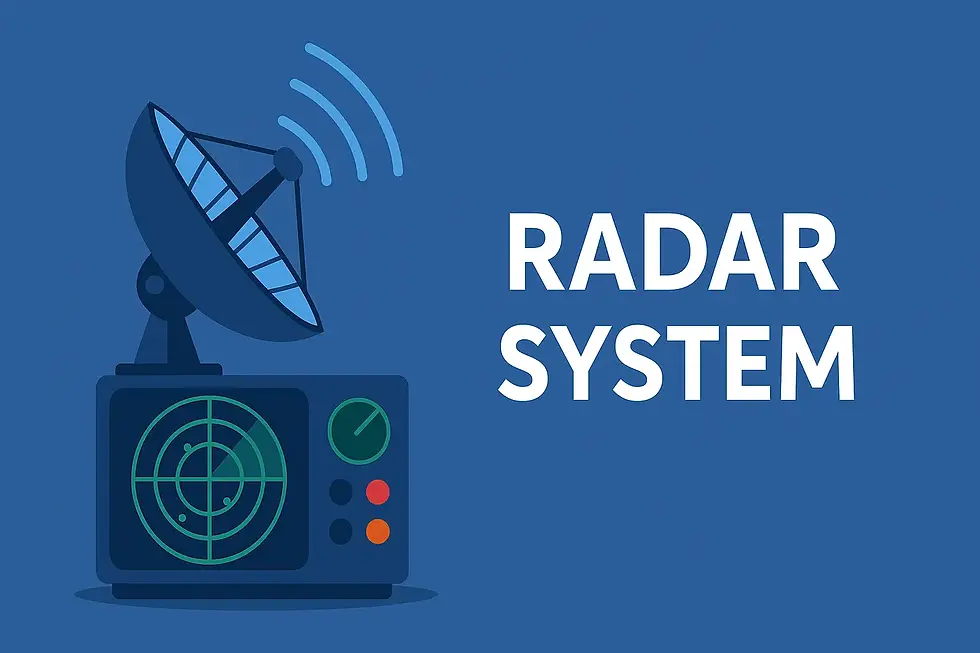Radar Systems: What They Are & How They Work
- Kalyan Bhattacharjee
- 2 days ago
- 2 min read

What is a Radar System? Types, Working, and Applications Explained
Introduction
Radar systems play a vital role in modern technology, providing solutions for everything from air traffic control and weather forecasting to military defense and autonomous vehicles. But what exactly are radar systems, and how do they work? In this blog, we will explore the fundamentals of radar systems, their types, applications, and the technology behind them.
What is a Radar System?
Radar stands for "Radio Detection and Ranging." It is a technology that uses radio waves to detect and determine the distance, speed, and direction of objects. A radar system emits radio waves, which bounce off objects and return to the radar receiver. By analyzing these returned signals, radar systems can gather vital information about the detected object.
How Does a Radar System Work?
Transmission: The radar antenna emits radio waves into the surrounding environment.
Reflection: When these waves hit an object (like an aircraft or vehicle), they are reflected back.
Reception: The radar antenna receives the reflected waves.
Analysis: The radar system analyzes the time delay and frequency shift of the returned signal to determine the object's distance, speed, and direction.
Types of Radar Systems
Pulse Radar
Emits short, powerful pulses of radio waves.
Measures distance based on the time taken by the pulse to return.
Continuous Wave (CW) Radar
Continuously emits radio waves.
Measures speed using the Doppler effect.
Monopulse Radar
Provides accurate angle measurement in a single pulse.
Phased Array Radar
Uses multiple small antennas.
Can steer the beam electronically without moving parts.
Synthetic Aperture Radar (SAR)
Used in satellite imaging and remote sensing.
Applications of Radar Systems
Air Traffic Control
Monitoring aircraft movements in and around airports.
Weather Forecasting
Tracking weather patterns like rainfall, storms, and tornadoes.
Military Defense
Detecting enemy aircraft, missiles, and ships.
Maritime Navigation
Helping ships avoid collisions and detect obstacles at sea.
Automotive Industry
Enabling features like adaptive cruise control and collision avoidance in vehicles.
Space Exploration
Mapping planetary surfaces and tracking space debris.
Advantages of Radar Systems
Works in all weather conditions.
Can detect objects at long distances.
Provides accurate speed and location data.
Penetrates fog, clouds, and darkness.
Limitations of Radar Systems
Expensive installation and maintenance.
Performance can be affected by clutter or interference.
Requires significant power.

Conclusion
Radar systems have revolutionized many industries with their ability to detect and track objects in a variety of conditions. From ensuring safety in aviation and maritime operations to advancing military defense and autonomous vehicles, radar technology continues to evolve and shape our modern world. As radar systems become more advanced and accessible, we can expect even more innovative applications in the future.
how does doppler radar work, radar what is, how does radar work, radar meaning, how does a weather radar work, tethered aerostat radar system, ground penetrating radar systems, marine radar systems, boat radar systems, rad torque systems, what is the radar system, fintech shield

Comments